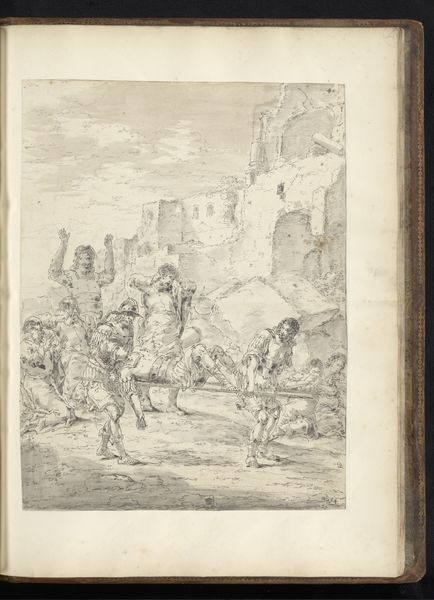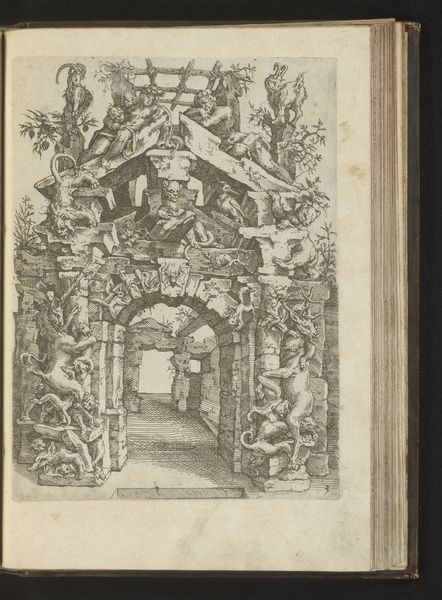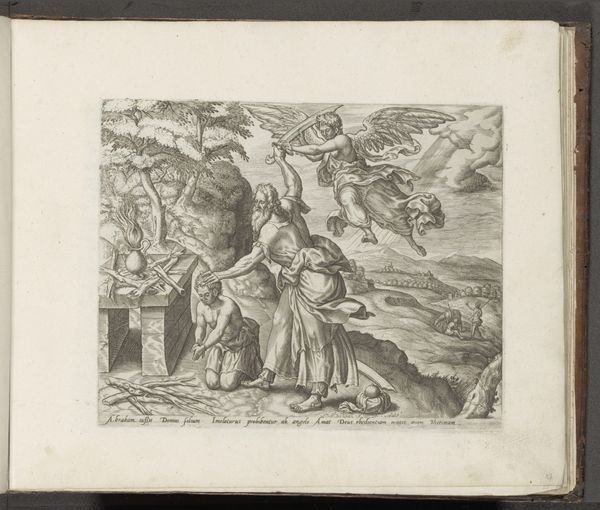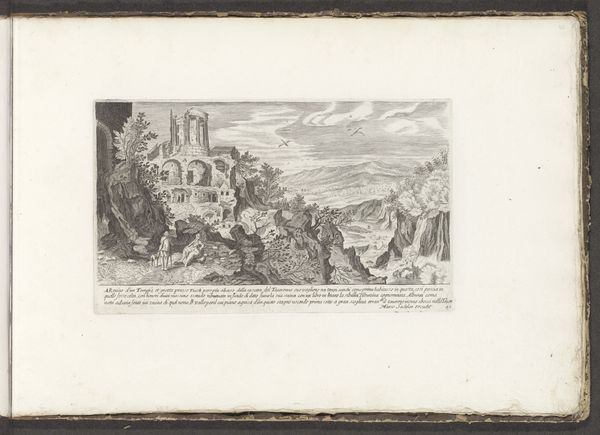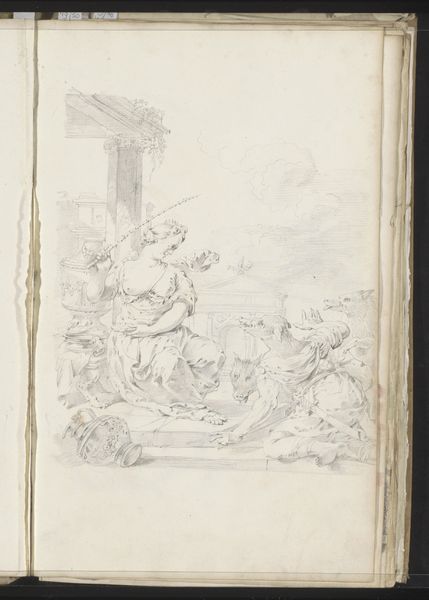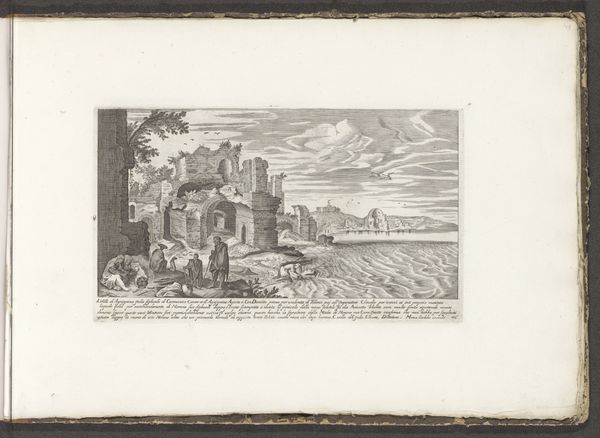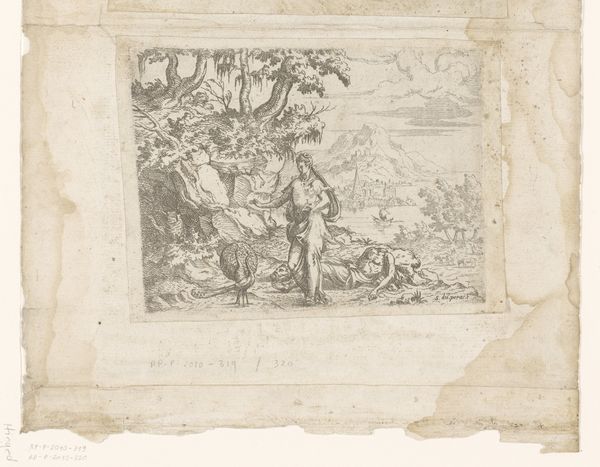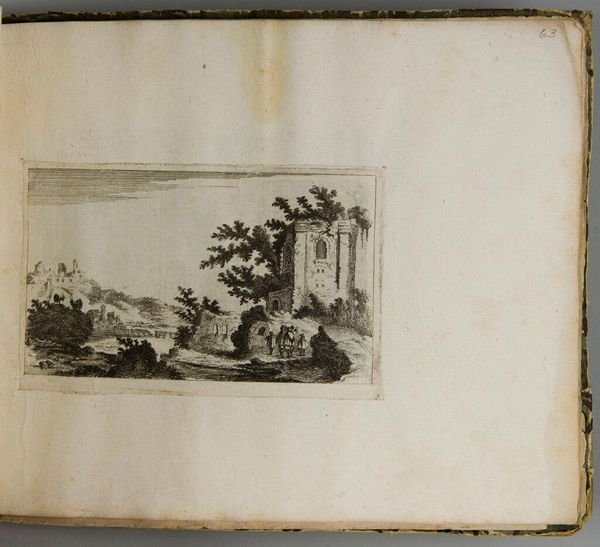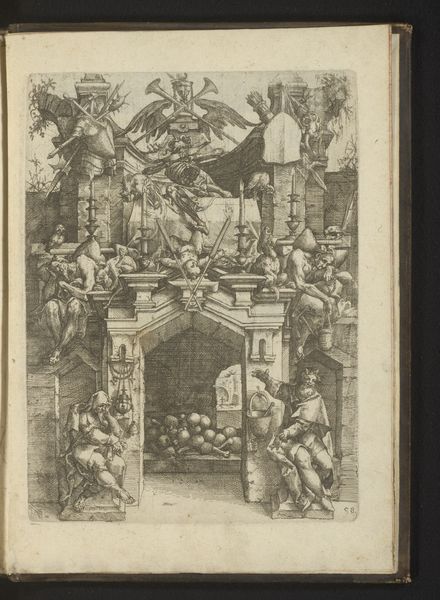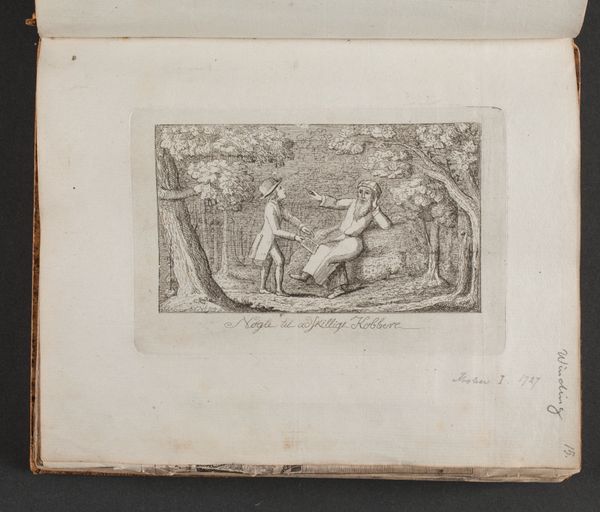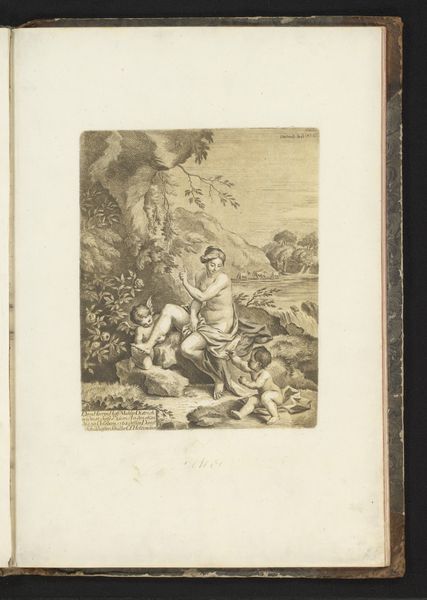
drawing, paper, pencil
#
drawing
#
dutch-golden-age
#
landscape
#
paper
#
coloured pencil
#
pencil
#
genre-painting
Dimensions: height 406 mm, width 298 mm
Copyright: Rijks Museum: Open Domain
Curator: Let’s consider this drawing by Leonaert Bramer, “Timoclea throws her rapist into a well,” created sometime between 1655 and 1665. It's currently held at the Rijksmuseum. Editor: My first thought is that despite the implied violence, there’s a surprising lightness to the image, almost ethereal in its tonal range. The figures and architecture feel dreamlike. Curator: Yes, Bramer's masterful use of line and shading truly captivates. Notice how the composition is structured around the well itself, forming a central axis. The receding buildings create a sense of depth that draws the eye into the scene, while also framing Timoclea and her victim. The stark contrast in their poses speaks volumes. Editor: Absolutely. Water, of course, often symbolizes cleansing or purification. To see the perpetrator thrust into that space feels like an act of karmic justice, a restoration of order after violation. Do you feel the act depicted serves more as revenge or justice, per se? Curator: I'm intrigued by the visual narrative that transcends the obvious. Observe the way Bramer plays with light. It is stark, and yet not truly dramatic. Is this muted emotion a result of Dutch Calvinism? The details—the folds of the clothing, the textures of the buildings and even the bucket—suggest an observant mind at work. He doesn't exaggerate, rather opts for understated symbolism. Editor: You've picked up an important nuance here in the work. Justice, revenge—perhaps the symbolic weight leans toward defiance and female resilience, concepts that resonate strongly even today. The buildings in the background appear to quietly look on. I wonder how contemporaries would have regarded such an act. Curator: Indeed. It raises interesting questions about societal views of gender, and justified retribution during that period. Editor: A somber scene presented through deceptively gentle marks. The work has clearly demonstrated that historical trauma is something the viewer can connect to today, despite our differences. Curator: The ability to render such a visceral story with such restraint is where the strength of Bramer’s craftsmanship lies. It is not simply an illustration but an interrogation.
Comments
No comments
Be the first to comment and join the conversation on the ultimate creative platform.
